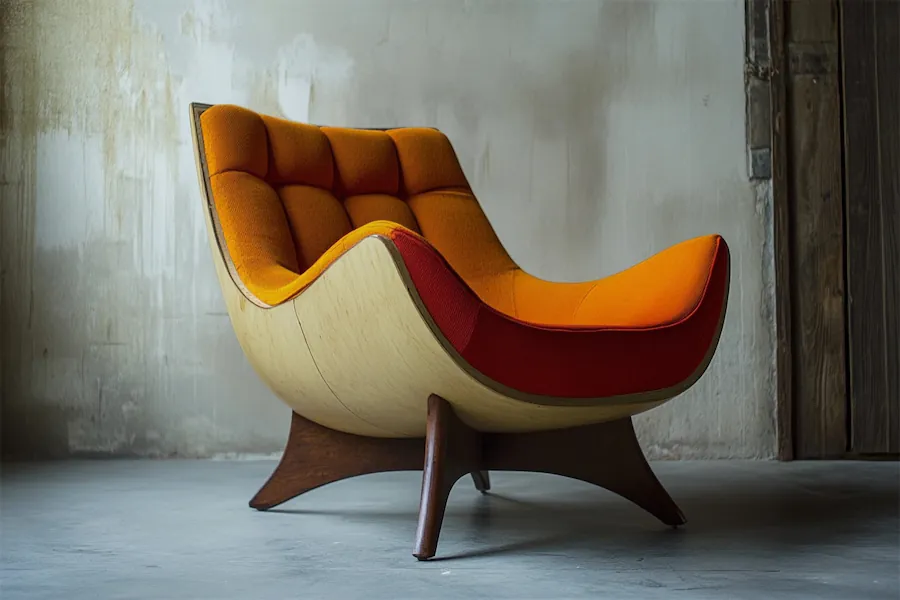Retro chairs evoke the charm and aesthetics of past decades, seamlessly blending vintage appeal with contemporary functionality. Their timeless designs and nostalgic allure make them a popular choice for various interior settings.
History and Origins of Retro Chairs
Retro chairs draw inspiration from design trends spanning the 1950s to the 1980s. This era witnessed a shift towards innovative materials and bold forms, with designers like Charles and Ray Eames pioneering the use of molded plywood and fiberglass to create ergonomic and stylish seating options. Their 1946 LCW (Lounge Chair Wood) is a notable example that revolutionized furniture design.
Key Features of Retro Chairs
- Distinctive Shapes: Retro chairs often feature unique silhouettes, such as the iconic wingback design, which is set to make a significant return as a preferred accent chair in both living rooms and home offices.
- Vibrant Colors and Patterns: Bold hues and playful patterns are characteristic of retro designs, adding a lively touch to interiors.
- Innovative Materials: The mid-20th century introduced materials like molded plywood, fiberglass, and tubular steel, which were utilized to craft durable and stylish chairs.
- Functional Design: Emphasis on comfort and practicality, with designs that cater to both aesthetics and ergonomics.
Applications of Retro Chairs
- Residential Spaces: Retro chairs serve as statement pieces in living rooms, bedrooms, and dining areas, infusing spaces with nostalgic charm.
- Commercial Environments: Their distinctive designs enhance the ambiance of cafes, restaurants, and boutique shops, creating inviting atmospheres.
- Office Settings: Incorporating retro chairs in office spaces adds a touch of vintage elegance, promoting a creative and comfortable work environment.
Considerations When Choosing a Retro Chair
- Authenticity: Determine whether you prefer an original vintage piece or a modern reproduction, each offering different levels of authenticity and price points.
- Condition and Quality: For vintage pieces, assess the chair’s condition and structural integrity to ensure longevity.
- Comfort: While retro chairs are aesthetically pleasing, it’s essential to consider their comfort, especially if they will be used frequently.
- Space Compatibility: Ensure the chair’s dimensions and style harmonize with your existing décor and spatial constraints.
Conclusion
Retro chairs encapsulate the essence of mid-20th-century design, offering a blend of nostalgia and functionality. Their enduring appeal lies in their ability to evoke memories of past eras while seamlessly integrating into contemporary interiors.
